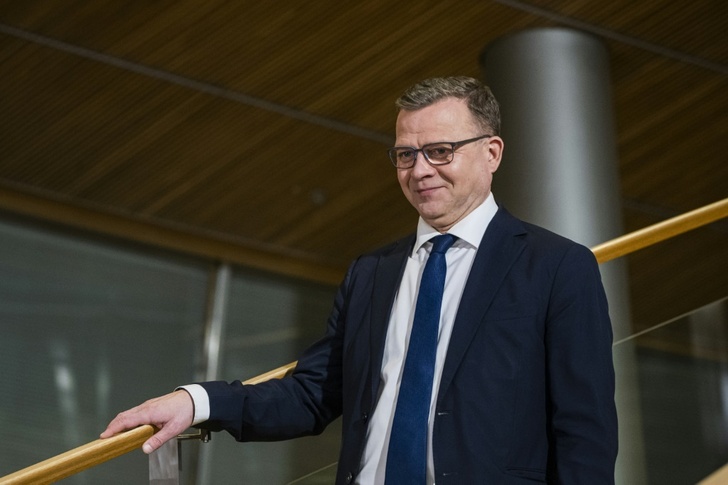Finland's conservative leader and Prime Minister designate Petteri Orpo said Thursday a four-party coalition including the far-right Finns Party had agreed to form a government more than two months after elections.
Besides the Finns Party, which secured second place in April's general election, the coalition includes Orpo's National Coalition Party, the smaller Swedish People's Party (RKP) and the Christian Democrats.
The four parties hold 108 seats out of 200 in parliament. Formal talks opened on May 2.
"I am proud of the good programme and the result of the negotiations. All the issues have been resolved," Orpo told reporters in Helsinki at a press conference with the three other party leaders.
Orpo, whose main election goal was to cut spending by six billion euros over four years, said the details of the government's programme would be revealed on Friday.
"Finland is in a very difficult situation. We have had to look everywhere for savings," Orpo said.
The negotiations to form a government, which in Finland usually take about one month, proved challenging on the topics of development aid, immigration and the climate, where the Finns Party clashed in particular with the RKP.
"We have disagreed on some things and I'm sure we still have disagreements, but what unites us is that we want to put Finland in order," Orpo said.
Sceptical about Finland's climate targets, the Finns Party campaigned for a hard line on immigration, highlighting neighbouring Sweden's challenges with gang shootings and bombings and laying the blame on immigrants.
But the RKP sees immigration as vital in combating Finland's ageing population.
During the tumultuous negotiations, the Finns Party threatened to withdraw from the discussions in May following the clashes with the RKP.
"I would like to thank my colleagues with whom we have managed to find an agreement," Finns Party leader Riikka Purra said, whose party achieved a record score of 20 percent in the elections.
As the next step, President Sauli Niinisto will instruct parliament to vote on the appointment of Orpo as the prime minister.
No date has been set for that yet.
Following a successful vote, Niinisto formally appoints Orpo as the prime minister.
- Hardliners -
A force in Finnish politics for more than 20 years, the Finns Party served in a centre-right government with the conservative National Coalition Party from 2015 to 2017.
That collaboration ended when the Finns Party split into two groups -- a moderate and a hardline faction.
Currently, only the hardliners remain in parliament, having become the second-largest party in the 2019 election.
Formerly known as the True Finns, political scientists have classified the party as anywhere from far-right to national-conservative and populist.
The Finns Party sees an EU exit as its long-term goal and wants to postpone Finland's 2035 target of carbon neutrality.
The party was previously allied in the European Parliament with the French National Rally (RN) and the Italian League.
But it announced in April that it was joining the eurosceptic European Conservatives and Reformists group, which includes the Polish nationalist Law and Justice party and the Brothers of Italy of Italian Prime Minister Giorgia Meloni.
After the Finns Party split, Orpo ruled out a collaboration due to the two parties' divergent stances on human rights.
But on the day of the elections, Orpo was asked about a possible coalition with the Finns Party and replied that "there is no far-right party in Finland."
Orpo's alternative would have been a "blue-red" coalition with outgoing Prime Minister Sanna Marin's Social Democrats -- not uncommon in Finland.
Worried about the rising debt-to-GDP ratio, the divergent stances on economic issues with the Social Democrats eventually pushed Orpo to side with the right-wing parties.
But experts have suggested the Finns Party could prove to be an unpredictable government partner, as their voter base could have a hard time accepting budget austerity.
In the April elections, the Social Democrats fell to third place with 43 seats, behind the National Coalition Party with 48 seats and the far right with 46.
ehu/po/imm
© Agence France-Presse
Your content is great. However, if any of the content contained herein violates any rights of yours, including those of copyright, please contact us immediately by e-mail at media[@]kissrpr.com.
Source: Story.KISSPR.com

